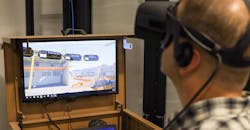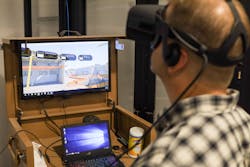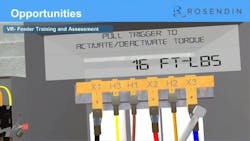Rosendin, the largest employee-owned electrical contractor in the United States and headquartered in San Jose, Calif., employs more than 1,000 office workers and 6,000 field personnel. In an effort to counter the labor shortage, increase efficiencies, and create safer environments for its electrical contractors, the company recently took some significant steps to boost its building information modeling (BIM) capabilities. In fact, over the last seven years, Rosendin’s BIM department has grown from six people in 2012 to more than 200 in 2019.
This department is responsible for creating 3D, information-rich models to enable the construction of complex structures: electrical panels, conduits, and equipment containing corresponding cost, material, and schedule information. The model is used throughout the phases of construction for coordination with different trades — creating construction documents, supporting quality control and assurance, and inclusion in project turnover documents. In short, the model aims to serve as the one truth to be referred to throughout the life cycle of the project.
One of the main phases of the BIM process is the coordination phase, during which coordinators ensure that each building trade has exclusive space for its installation. However, during construction, many components tend to shift and often end up in space “reserved” for other trades. Since electrical is often one of the last systems to be built, the foremen and their teams typically go on site and compare the model to the field conditions to conclude whether the model can be constructed as-modeled before prefabrication begins. This process is time consuming and often inaccurate because it’s unreasonable to pull every dimension from every angle to ensure the modeled content fits the available space.
One possible solution is to place the model in space at full scale using AR and to visually compare the model to its potential placement. This theoretically increases the accuracy and reduces rework that would, in turn, save time and money. The key word here is “theoretically.”
A pilot study was conducted at one of Rosendin’s job sites to ensure that the solution was viable and to quantify potential savings before company-wide deployment was initiated. The following synopsis summarizes some of the lessons learned during this pilot study.
Before starting the study, the testing team was successfully able to determine the metrics to be tracked. They included the number of clashes per area, number of change orders per area, and associated costs. They were all tracked before and after the deployment of AR. The data collected enabled the team to later analyze before and after comparisons that clearly quantified the benefits of this use of AR and highlighted the success of this application.
Furthermore, a theoretical understanding of the benefits of this application was established with the entire field team early during the pilot; the project manager, superintendent, coordinators, and foremen were able to grasp the potential of this application. Having this initial buy-in was instrumental in the success of this pilot, since the site team provided continuous support while the application and underlying process was being refined. In fact, having end-user buy-in is the most important factor when introducing a new technology. Regardless of how good the technology is, it will only add value if the end-users actively use it.
On the other hand, the team faced multiple unexpected issues. First, although the AR tool was tested and worked effectively in an office setting, it lagged and shut down repeatedly on site due to unforeseen conditions like heat, lack of connectivity, and dim lighting. Before the actual testing could even begin, the tool and usage process had to be refined numerous times, and workarounds were invented to achieve the desired functionality. Once more, the construction team’s insights into possible limitations and concerns enabled the development team to make the tool more functional and robust.
Another aspect that had to be revised was the exporting process from the original BIM authoring software to the device. The original process worked well on small models, but in practice, it required around 30 minutes of processing time on the computer before the model was ready to be displayed on the device. The loss of productivity while exporting was likely to offset some of the perceived benefits, so the team worked to optimize the exporting process, bringing it down to less than 5 minutes per export. The faster export not only immediately increased productivity, but it also streamlined the training process, which would later accelerate wider deployment.
Overall, the pilot for using AR for comparing the model with site conditions prior to installation was a resounding success. Not only was it well received by the field teams, but it was also shown to reduce spots that required rework to about a third per area and subsequently saved on cost and schedule overruns. In fact, the AR tool is in such high demand on the original testing job site that there is more need for the AR devices than the supplier can deliver. Generally, it is important to gauge expectations, but it is also important to be ready to capitalize on huge successes. Right now, a scheduling tool is put in place to check out the AR devices while waiting for the new devices to be delivered and the required software to be installed.
This is one of many examples of how Rosendin continues leveraging BIM to improve productivity, safety, and efficiency for its internal and external customers.
Meeske is the corporate BIM director and Dr. Chalhoub is the technology implementation lead in the BIM Department at Rosendin, San Jose, Calif. They can be reached at [email protected] and [email protected].
About the Author
Jad Chalhoub
Dr. Chalhoub is the technology implementation lead in the BIM Department at Rosendin, San Jose, Calif.


